The College of Science works in partnership with the Research Office and others to support top-of-the-line facilities that allow our researchers and students to make discoveries that contribute to a healthy, environmentally sound, and technologically advanced world. Our instrumentation and synthesis capabilities are world-class and a point of pride for us — we stay on the cutting edge of technology and make our labs and equipment available both to partners in industry and to faculty and students across the entire OSU community.
Key Research Facilities
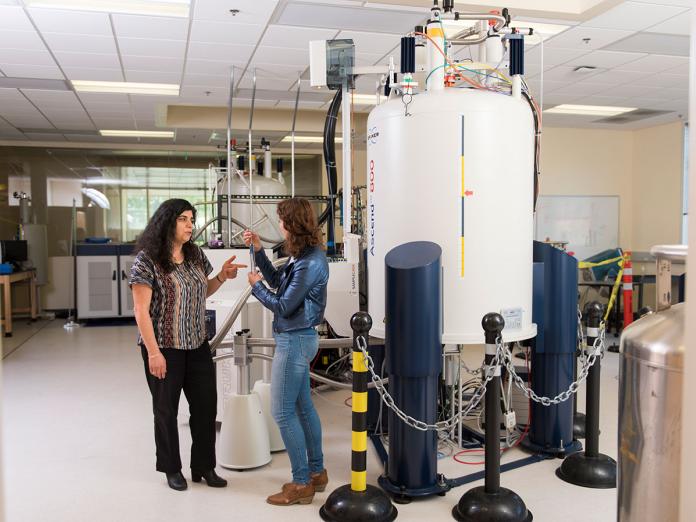
Nuclear Magnetic Resonance Facility
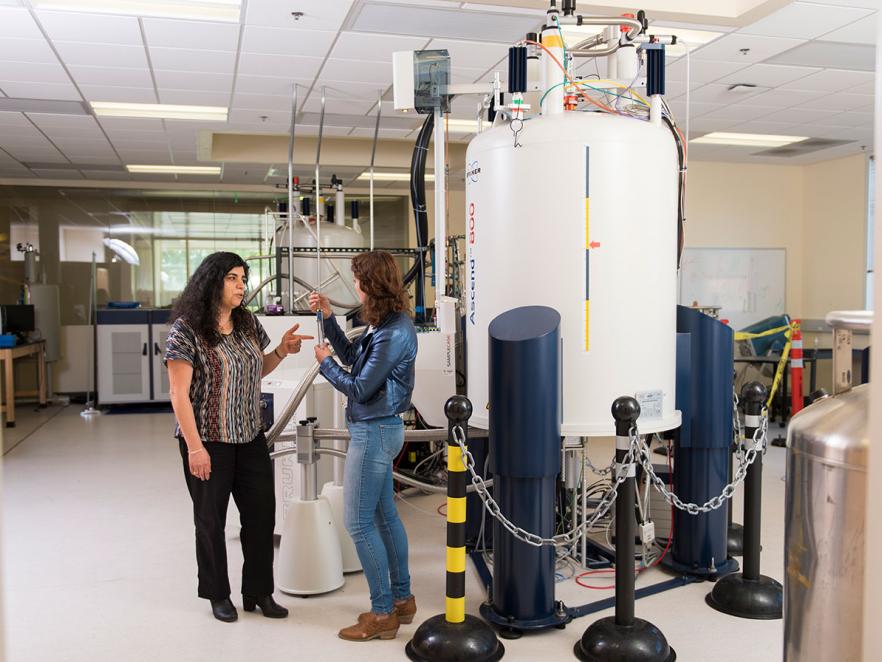
Nuclear Magnetic Resonance Facility
A leading-edge facility that serves diverse researchers across the Pacific Northwest with the highest field NMR spectrometers in the state of Oregon. The NMR Facility supports NMR-related research and education in order to advance the understanding of fundamental physical and biological systems that span multi-disciplinary areas of science.
Services include Biomolecular and small molecule NMR analysis, analytical ultracentrifugation and more.
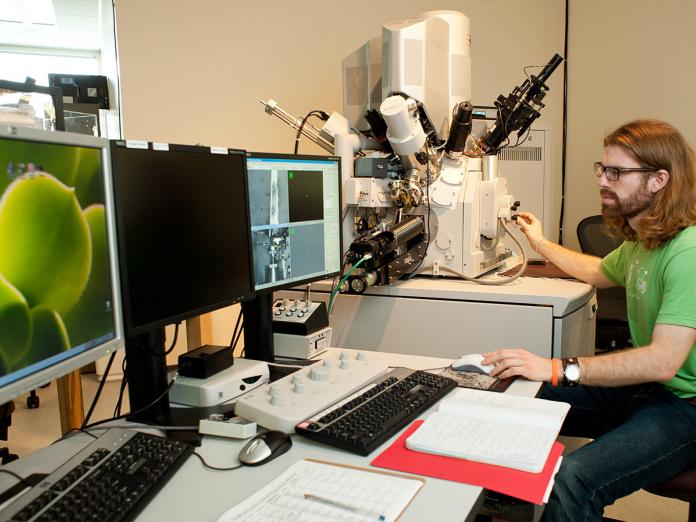
Electron Microscopy Facility
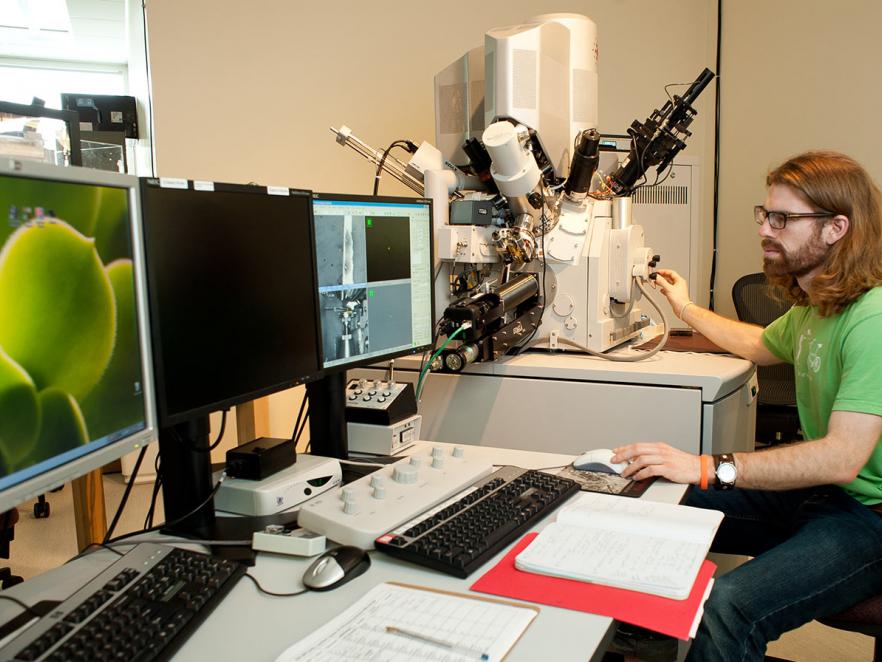
Electron Microscopy Facility
The facility offers imaging solutions to students, scientists and industry partners through the most advanced electron microscopes, including an FEI Titan with ChemiSTEM technology, related instrumentation, as well as consultation with expert staff.
Services include electron microscopy instrumentation for all basic and applied STEM research programs, graduate and undergraduate training and education.

OSU Mass Spectrometry Center
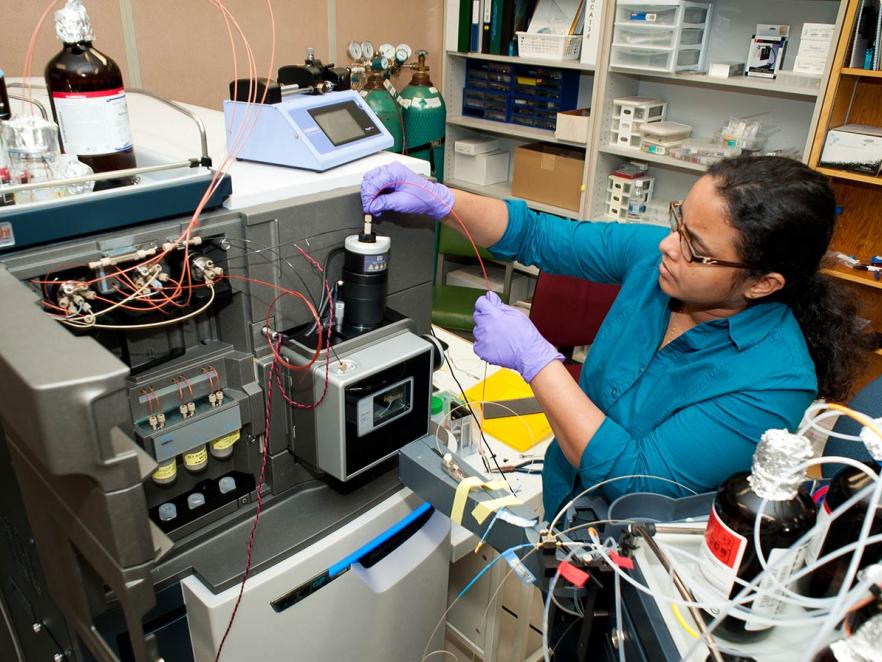
OSU Mass Spectrometry Center
A central pillar in a network of interdisciplinary research at Oregon State that supports and accelerates research in environmental health, biomedical and biological sciences and any research that depends on cutting-edge mass spectrometry. The center is a state and university-wide resource that also trains young professionals in mass spectrometry on the most modern equipment available.
Services include analysis of large and small biomolecules, proteins and peptides, biopolymers and synthetic polymers and more.
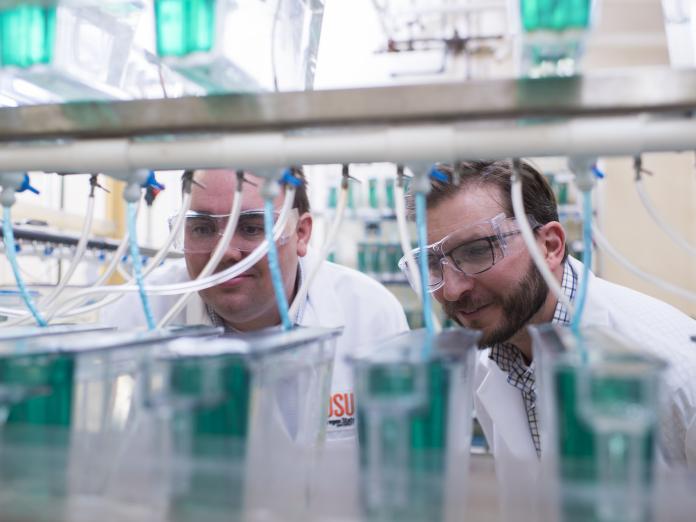
Oregon State Microbiome Initiative (OMBI)
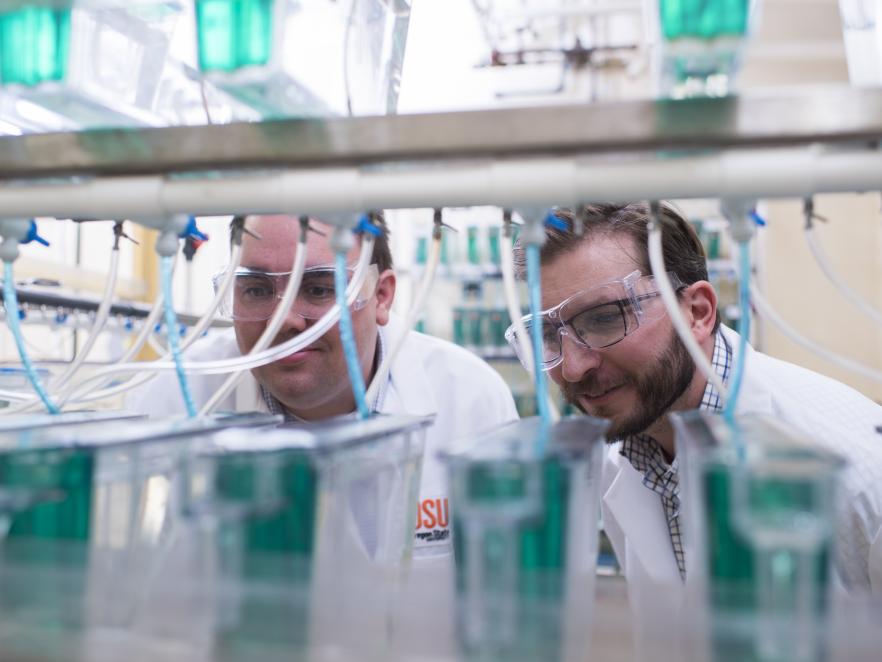
The Sharpton lab studies changes in the gut microbiome which broadly influence human and animal health and evolution.
Oregon State Microbiome Initiative (OMBI)
Microbiome research is poised to transform human health and society. The Oregon State Microbiome Initiative (OMBI) — our microbiome research and education program — is at the forefront of research on the health impacts of microbial communities. An interdisciplinary team of scientists investigate the biodiversity of microbiomes and interactions with a diverse array of environments to deliver on the promise of meaningful social applications.
Services include bioinformatic methods, microbiome data analysis, graduate and undergraduate training and education.
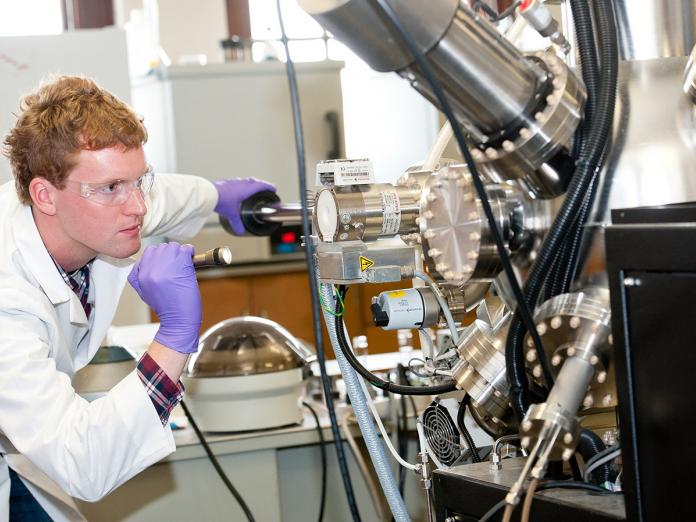
Materials Synthesis and Characterization Facility
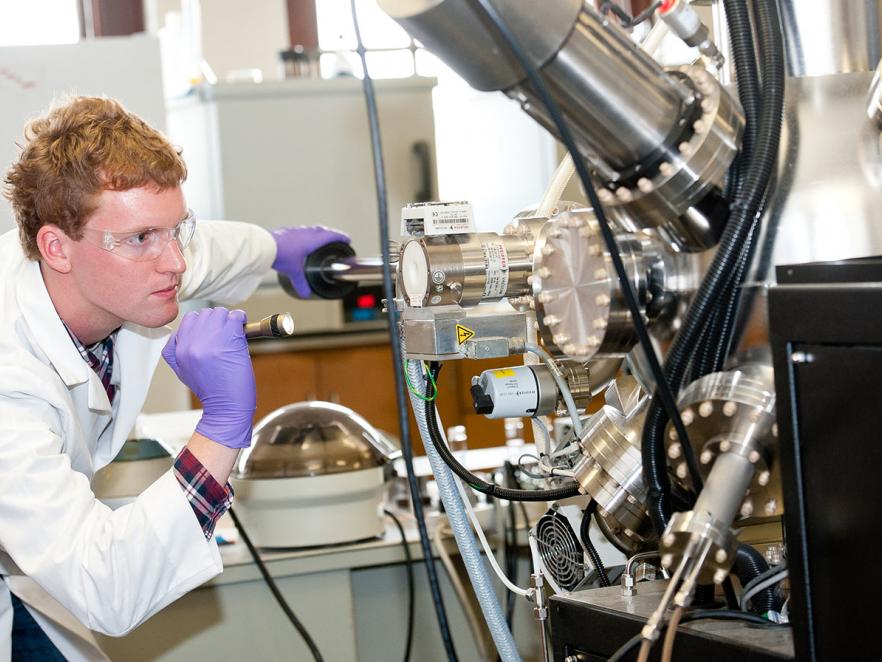
Materials Synthesis and Characterization Facility
The Materials Synthesis and Characterization Facility is a comprehensive innovation center that provides researchers with deep experience in thin-film deposition, device fabrication, and materials analysis. The Facility serves as a premier hub for materials and device development at OSU, and partners with industry to foster novel technologies and products.
Services include materials and device synthesis and characterization, new product development, industrial research collaboration.

Center for Quantitative Life Sciences
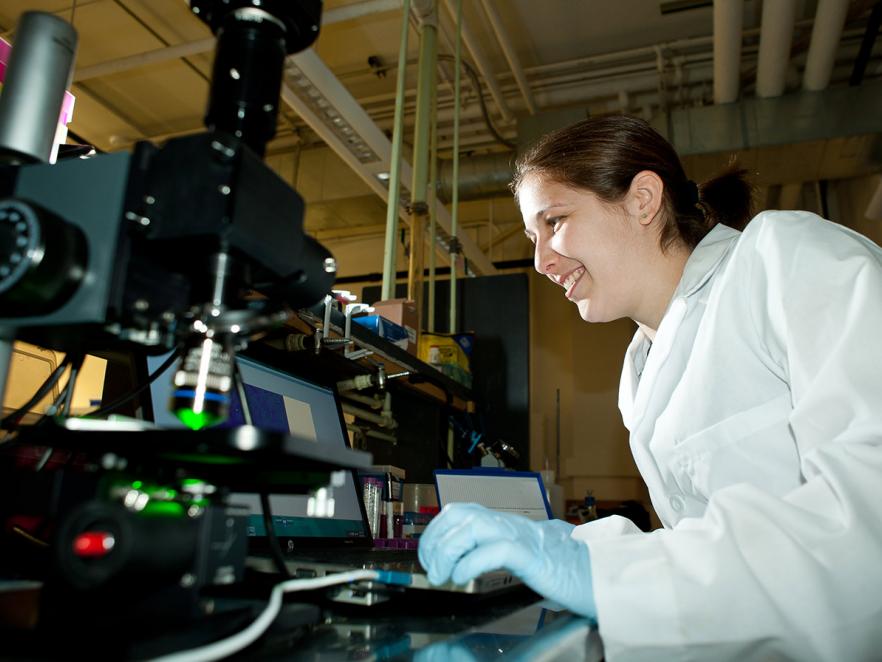
Center for Quantitative Life Sciences
The Center for Quantitative Life Sciences offers leadership, training and services in genome-enabled and data-driven research in the life and environmental sciences to faculty and students at Oregon State, the region, and across the country. The facility provides wide-ranging support for high-level computational biology and bioinformatics research, and sponsors seminars and conferences on these topics.
Services include genomics, biocomputing and bioinformatics, imaging and image analysis, graduate and workforce training.
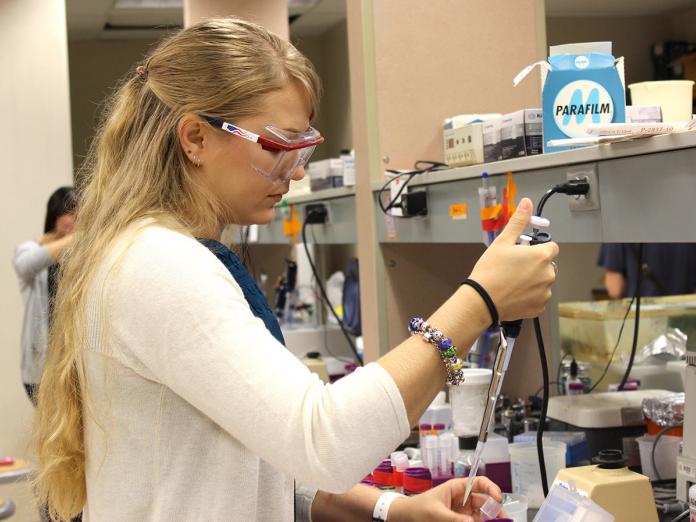
GCE4ALL Research Center
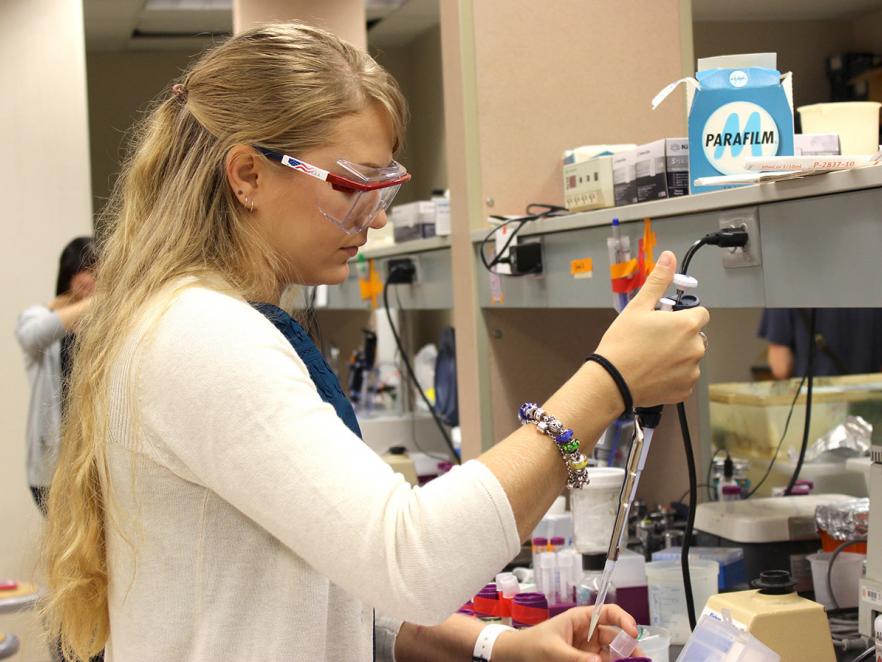
GCE4ALL Research Center
The GCE4ALL Center will allow biomedical researchers around the world to have access to better scientific tools for using genetic code expansion (GCE) technologies to generate specially designed forms of proteins for probing and visualizing how life works. These powerful tools will promote breakthroughs in revealing health related physiological processes and as well as in determining how and where these physiological processes go wrong to cause cancer, heart disease, pain, diabetes, Parkinson's, and many other diseases. The improved technologies will also drive new innovations and enable the development of more sensitive and specific diagnostic tests and more effective therapeutics.
Services include engineering cells for use in research that have an expanded genetic code and can produce selected proteins with designer chemical groups in exactly defined places.
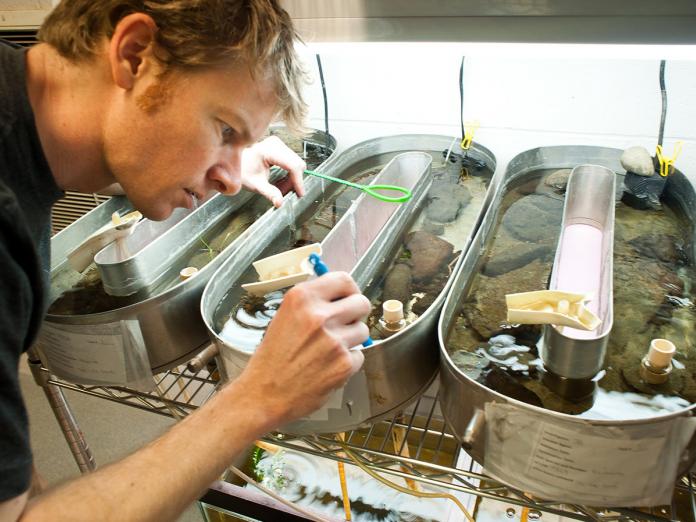
John L. Fryer Aquatic Animal Health Laboratory
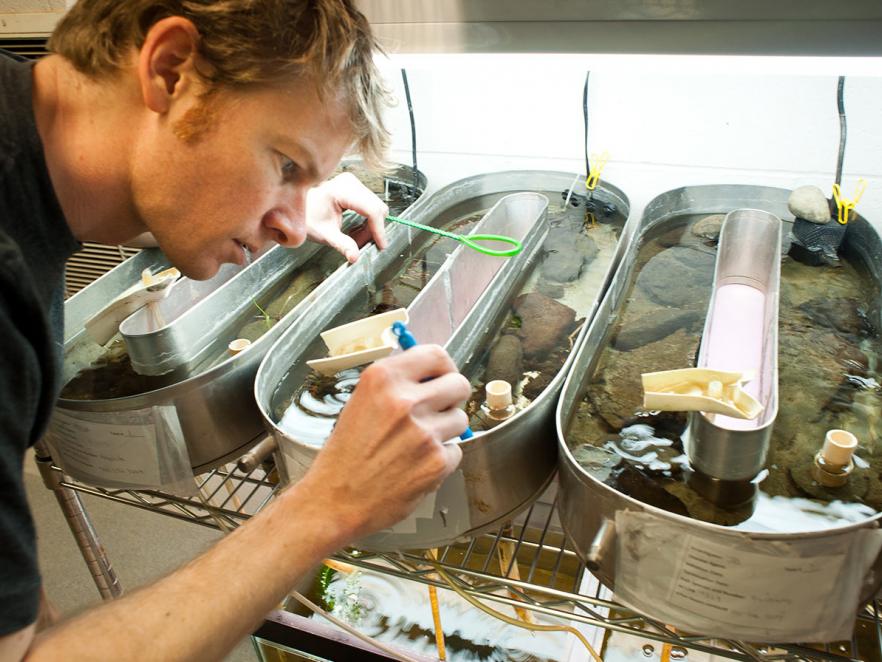
John L. Fryer Aquatic Animal Health Laboratory
The John L. Fryer Aquatic Animal Health Laboratory (AAHL) is Oregon’s highly regarded research laboratory designed to support pioneering research with freshwater fish, amphibians and invertebrates. The 9000 square feet facility offers both wet and dry labs and technical support to research scientists from OSU, private industry, state agencies and national and international institutions.
Named for Dr. John L. Fryer, the founder of the fish disease research program at OSU, this invaluable aquatic animal health facility also offers hands-on learning opportunities and public education services to K-12 students, teachers, researchers and members of the community.
Services include research support on vaccine development, disease mechanisms, feed supplement trials, hatchery--wild behavior, gut microbiome, climate change impacts and more.
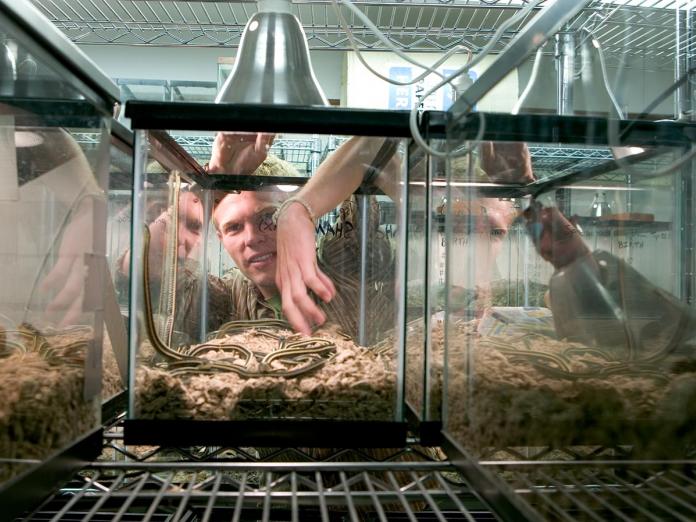
Oregon State Herpetological Collection
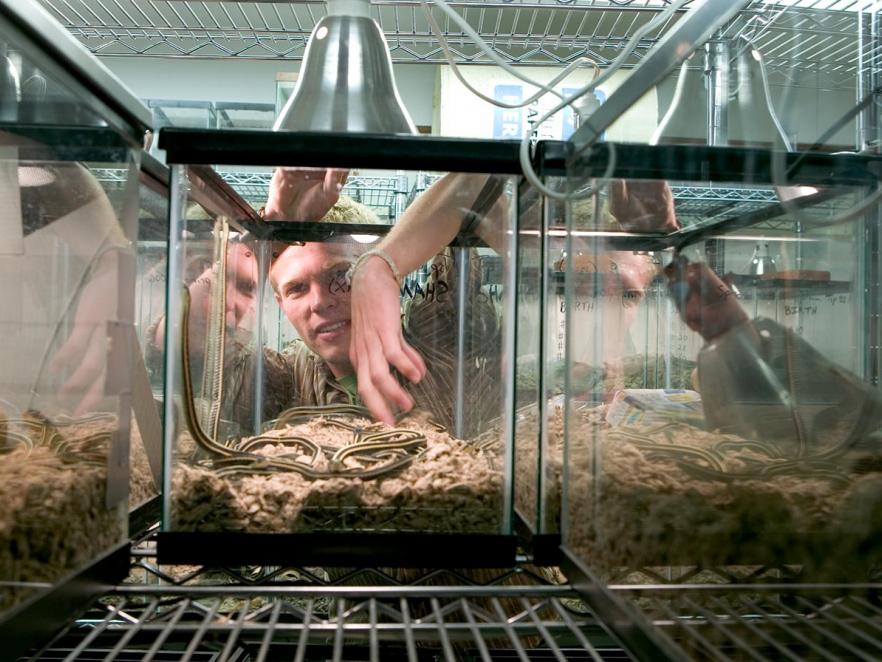
Oregon State Herpetological Collection
The Oregon State Herpetological Collection has an important repository focused on Oregon and the Pacific Northwest making it one of the most extensive museum collections in the United States. The research collection has more than 60,000 ethanol-preserved amphibians and reptiles, and approximately 24,000 frozen tissue samples, as well as the largest collection of garter snakes (Thamnophis) in the world.
Services include research collection of amphibians and reptiles and frozen tissue samples.
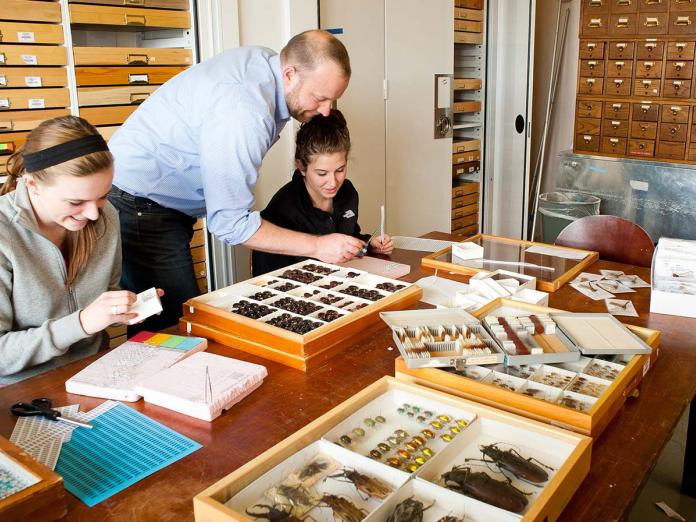
Oregon State Arthropod Collection
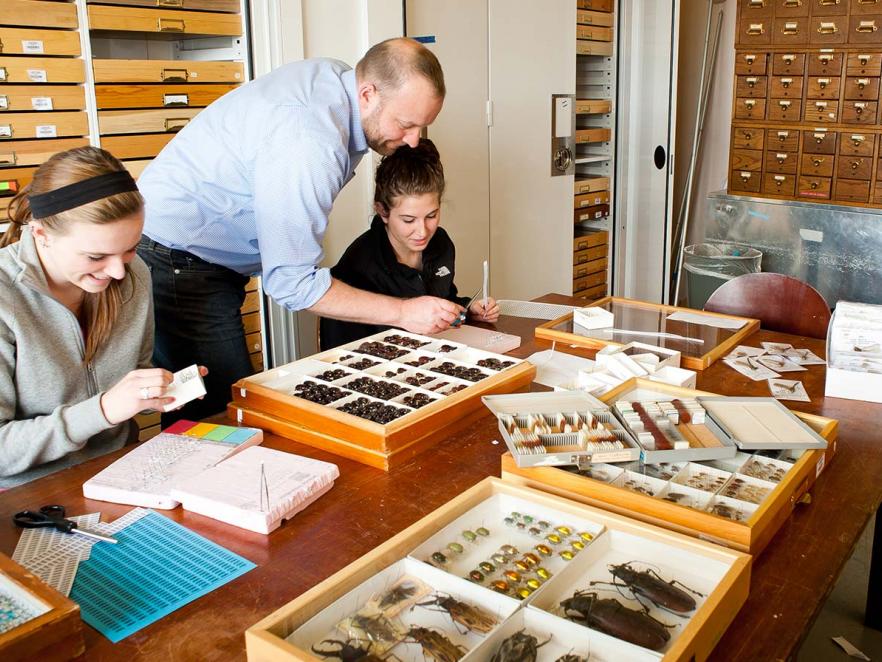
Oregon State Arthropod Collection
An OSU landmark, the Arthropod Collection is the largest insect collection in the Pacific Northwest with nearly 3 million specimens supporting entomological research and teaching within OSU and the entire region. The Collection is used by researchers in Oregon and around the world to conduct scientific studies on new species and genera, evolutionary history and biological complexity of insects.
Services include three million research specimens, specimen imaging system.

Survey Research Center

Survey Research Center
For nearly 50 years, the Survey Research Center has been a leader in research-based survey design, data collection, methodology and analysis at OSU and in the region as well as nationally. A part of the Department of Statistics, the Center offers statistical expertise to clients on best approaches, efficient sampling and questionnaire designs, analyses and interpretation of survey results. The Center’s clients include federal, state, and local agencies, national non-profit organizations, and OSU units and community members.
Services include data collection, research-based survey design, statistical methodology and more.
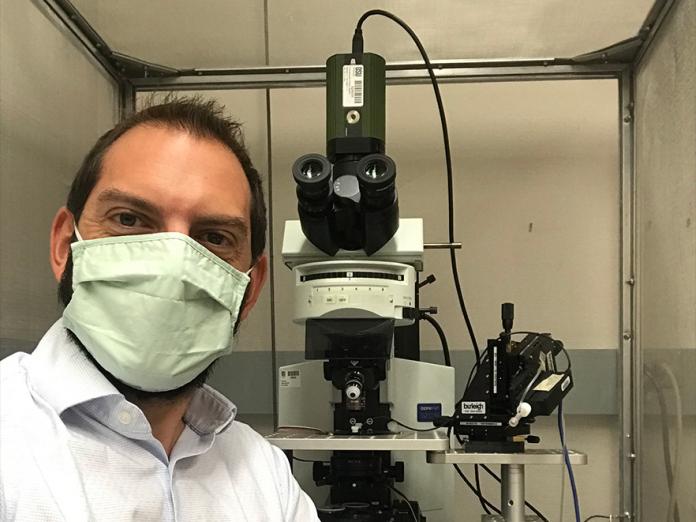
Electrophysiology Facility

Electrophysiology Facility
The Electrophysiology Facility (EF) offers comprehensive research support for electrophysiological experiments to advance neuroscience research. The goal of the EF is to ensure that Oregon State faculty have access to top-notch electrophysiological expertise and resources throughout the entire scientific process. The facility is home to ultramodern equipment to support a wide range of applications for the study of living nervous tissue. The latter includes a MED64 multielectrode array to probe complex electrophysiological dynamics of cells and tissues and strengthen brain-circuit research.
Services include training, mentorship and sharing of expertise and resources.
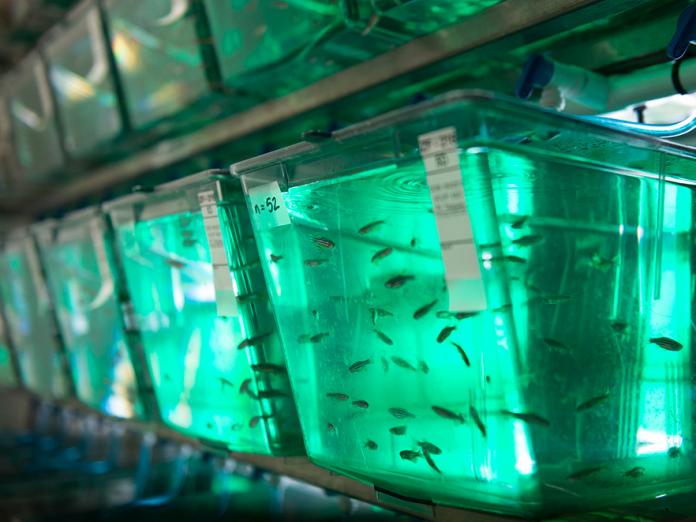
Pacific Northwest Center for Translational Environmental Health Research
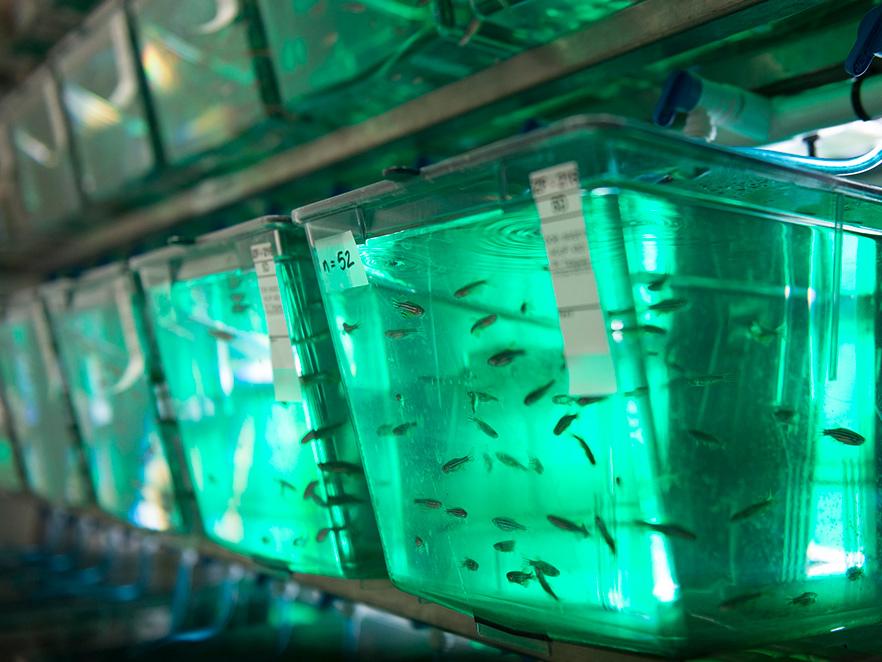
Pacific Northwest Center for Translational Environmental Health Research
Since 1967, the NIH-funded Environmental Health Sciences Center (EHSC) at OSU has been at the forefront of research on how the environment affects people in order to promote healthier lives. The Center provides scientists with access to state-of-the-art equipment, environmental health training, services, and expertise in specific research technologies to measure health impacts and create partnerships to strengthen biomedical research. Among others, the EHSC is known for its landmark Zebrafish Biomedical Research focus that utilizes zebrafish research models and high throughput screening facility for toxicity and behavioral studies
Services include zebrafish aquatic research models, high throughput screening.
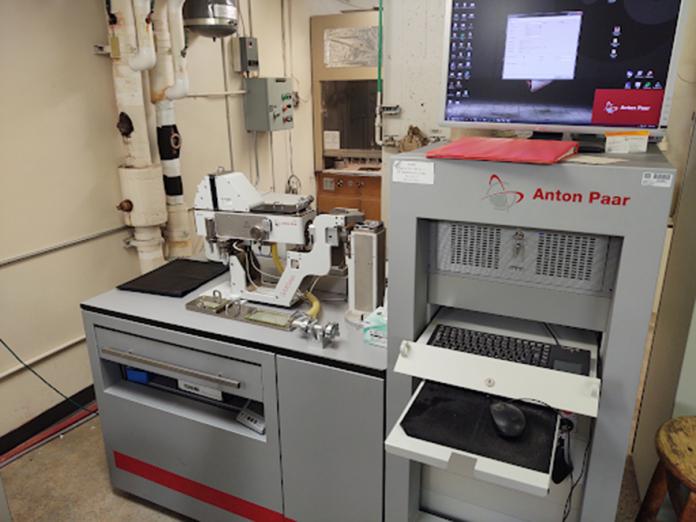
X-Ray Diffraction Lab
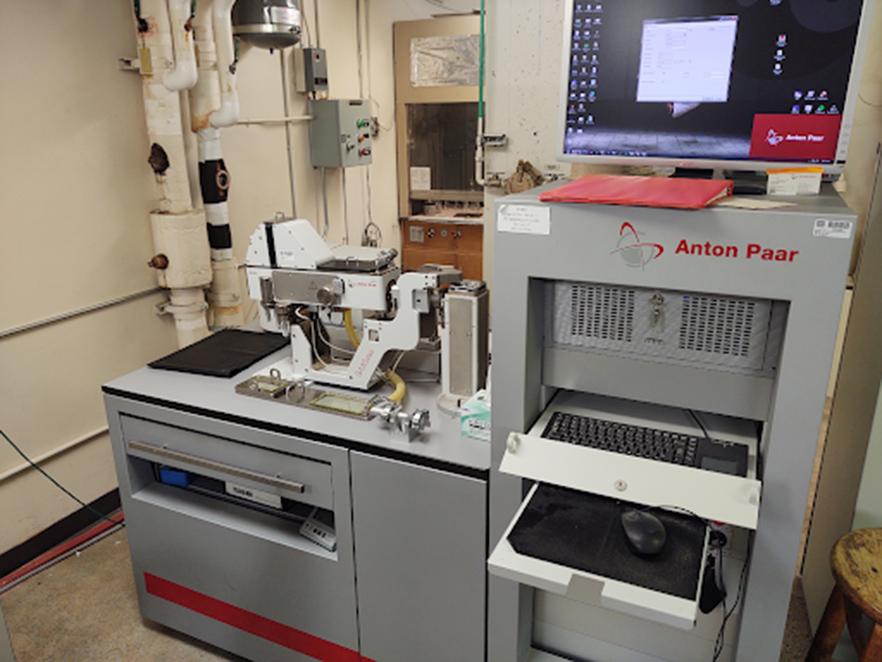
X-Ray Diffraction Lab
The X-Ray Diffraction Lab (XRD) offers specialized and powerful instrumentation for characterizing and offering detailed information about the structure of crystalline substances of great importance in chemistry, physics, materials science, engineering and biology. The XRD Facility enables users to tackle complex problems focused on the characterization of atomic structures through judicious collection of X-Ray data. The facility utilizes versatile X-ray scattering and diffractometers to analyze nanoscale structures, dimensions and properties. The diffractometers provide advanced structure determination that include phase identifications of crystalline powders, measurements of nanomaterials, thin-film measurements and single crystal diffraction.
Services include tools and training for XRD related work for both OSU members and outside collaborators; diffraction; pair distribution function analysis; small angle X-ray scattering.

North American Nanohertz Observatory for Gravitational Waves

Image by NASA/JPL-Caltech.
North American Nanohertz Observatory for Gravitational Waves
The North Amercian Nanohertz Observatory for Gravitational Waves or NANOGrav is a $17 million National Science Foundation center with researchers from the United States and Canada.
The goal of NANOGrav is to detect low-frequency gravitational waves with the help of objects called pulsars — dead stars that send out pulses of radio waves with extraordinary regularity. Led by Xavier Siemens, professor of physics at Oregon State University, NANOGrav has over 100 members at over 40 institutions. NANOGrav shares its resources and knowledge with similar experiments in Australia and Europe with the hope to usher in the era of gravitational wave astronomy more quickly and with greater impact.

Oregon Space Grant Consortium

Oregon Space Grant Consortium
At the direction of the U.S. Congress, NASA established the National Space Grant College and Fellowship Program to establish a national network of universities that facilitate cooperative programs among universities, industries and governments; encourages space science related interdisciplinary training, research and public service programs; recruits and trains professionals, particularly underrepresented demographics; and develops strong STEM education at all levels.
